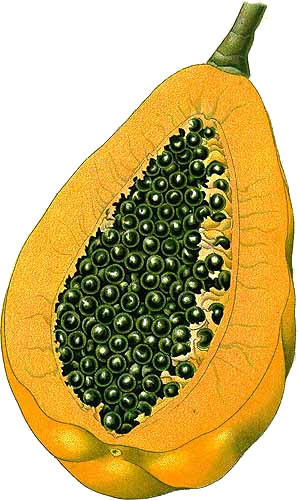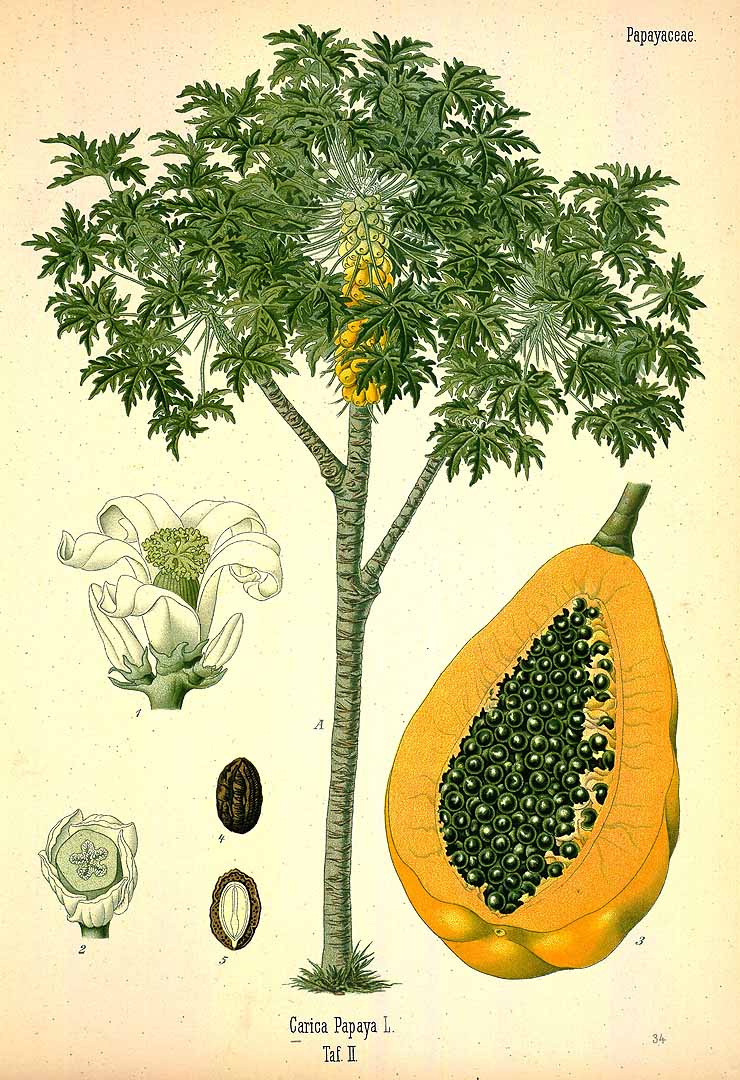! Nouveau site ici !
Vita > Plantae > Magnoliophyta > Magnoliopsida > Violales >
Caricaceae > Carica
Carica papaya
(Papayer)



 | ***** - ***
| ***** - ***
Vita > Plantae > Magnoliophyta > Magnoliopsida > Violales >
Caricaceae > Carica
Carica papaya
(Papayer)

-2/-2,5°C
La papaye est l'un des fruits les plus connus des tropiques. La plante droite à tige molle atteint 3 à 5 mètres de haut et n'a que de temps en temps des branches. La tige est légèrement ligneuse et présen... (traduction automatique)
→suite
⬀
Le  donne accès au menu
donne accès au menu (c'est votre point de repère) 😊 ;
En dessous vous avez la classification, à partir de la vie (Vita, premier rang) jusqu'à la classe au dessus de la plante, dont vous trouvez ensuite le nom scientifique/botanique (latin) puis le nom commun (français), le cas échéant ;
C'est aussi un lien vers la fiche complète (tout comme la ✖, en bas à droite, et le +, en dessous de la description) ;
Vient alors l'illustration (ou ce qui la remplace, en attendant), la comestibilité :
Et en bas
⬂







